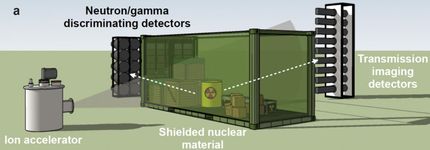A new chapter in optics
Gamma-rays for in-depth probes
They can be bent after all: In defiance of a decades-old assumption, gamma-rays can be focused with lenses. The discovery opens up a range of potential applications – from monitoring of nuclear waste to new cancer therapies.
Gamma-rays are extremely powerful electromagnetic waves that are far more energetic than visible light. Physicists have long assumed that gamma radiation cannot be refracted by lenses, and thus cannot be manipulated optically. In contrast, optics with X-rays was shown to be feasible in the mid-1990s.
In experiments carried out at the Institut Laue-Langevin (ILL) in Grenoble, researchers led by the physicist ProfessorDieter Habsof LMU Munich and the Max Planck Institute for Quantum Optics in Garching have now shown that lenses made of silicon can focus gamma-rays just like visible light. The effect is due to the interaction between the gamma-rays and the strong electric fields associated with silicon nuclei.
“Our findings open up an entirely new dimension in optics,” says Professor Habs. “We have, as it were, found spectacles that will make it possible to exploit gamma-rays for a range of applications.” Gamma-ray detectors for ultra-precise characterization of materials are but one example. “Gamma-rays are ten to a thousand times more energetic than X-rays and can penetrate very dense materials. One could even perform remote imaging of individual atoms – an important advantage for the detection of radioactive materials, for instance“, he explains.
Habs also envisages future applications in medicine. Monitoring of the distribution of chemotherapeutic drugs in the body would allow dosages to be adjusted as required. The degree of refraction achieved with the lenses used so far is relatively low. In future, Habs and his team plan to use lenses made of gold. Because the electric fields near gold nuclei exceed those in silicon atoms, the researchers expect the gamma-rays to be deflected to a greater extent by the former. The experiments with gold lenses will begin in the summer.
Original publication
Most read news
Original publication
Dietrich Habs, Marc Günther, Michael Jetschel and Waldemar Urban; Refractive Index of Silicon at γ Ray Energies; Physical Review Letters
Organizations
Other news from the department science

Get the chemical industry in your inbox
From now on, don't miss a thing: Our newsletter for the chemical industry, analytics, lab technology and process engineering brings you up to date every Tuesday and Thursday. The latest industry news, product highlights and innovations - compact and easy to understand in your inbox. Researched by us so you don't have to.





























































